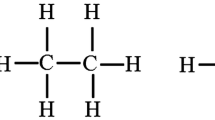Abstract
This paper presents an evaluation of the energy intensity and related greenhouse gas/CO2 emissions of integrated oil sands crude upgrading processes. Two major oil sands crude upgrading schemes currently used in Canadian oil sands operations were investigated: cokingbased and hydroconversion-based. The analysis, which was based on a robust process model of the entire process, was constructed in Aspen HYSYS and calibrated with representative data. Simulations were conducted for the two upgrading schemes in order to generate a detailed inventory of the required energy and utility inputs: process fuel, steam, hydrogen and power. It was concluded that while hydroconversion-based scheme yields considerably higher amount of synthetic crude oil (SCO) than the cokerbased scheme (94 wt-% vs. 76 wt-%), it consumes more energy and is therefore more CO2-intensive (413.2 kg CO2/m3 SCO vs. 216.4 kg CO2/m3 SCO). This substantial difference results from the large amount of hydrogen consumed in the ebullated-bed hydroconverter in the hydroconversion-based scheme, as hydrogen production through conventional methane steam reforming is highly energy-intensive and therefore the major source of CO2 emission. Further simulations indicated that optimization of hydroconverter operating variables had only a minor effect on the overall CO2 emission due to the complex trade-off effect between energy inputs.
Similar content being viewed by others
References
McKellar J M, Charpentier A D, Bergerson J A, MacLean H L. A life cycle greenhouse gas emissions perspective on liquid fuels from unconventional Canadian and US fossil sources. International Journal of Global Warming, 2009, 1(1–3): 160–178
Burkhard J, Forrest J, Gross S. Oil sands, greenhouse gases, and European oil supply: Getting the numbers right. IHS CERA Special Report, April 2011
Environment Canada. 1990–2010: Greenhouse Gas Sources and Sinks in Canada. National Inventory Report, 2012
Furmisky E. Emissions of carbon dioxide from tar sands plants in Canada. Energy & Fuels, 2003, 17(6): 1541–1548
Environment Canada. Canada’s Emissions Trends. October 2013
Ordorica-Garcia G, Croiset E, Douglas P, Elkamel A, Gupta M. Modeling the energy demands and greenhouse gas emissions of the Canadian oil sands industry. Energy & Fuels, 2007, 21(4): 2098–2111
Charpentier A D, Bergerson J A, MacLean H L. Understanding the Canadian oil sands industry’s greenhouse gas emissions. Environmental Research Letters, 2009, 4(1): 1–11
Alvarez-Majmutov A, Chen J, Munteanu M. Simulation of bitumen upgrading processes. Petroleum Technology Quarterly, 2013, Q2: 31–35
Sayles S, Romero S. Understand differences between thermal and hydrocracking. Hydrocarbon Processing, 2011, September: 37–44
Yui S. Producing quality synthetic crude oil from Canadian oil sands bitumen. Journal of the Japan Petroleum Institute, 2008, 51(1): 1–13
Yui S, Chung K H. Processing oil sands bitumen is Syncrude’s R&D focus. Oil & Gas Journal, 2001, 99(17): 46–53
Morawski I, Mosio-Mosiewski J. Effects of parameters in Ni-Mo catalysed hydrocracking of vacuum residue on composition and quality of obtained products. Fuel Processing Technology, 2006, 87(7): 659–669
Danial-Fortain P, Gauthier T, Merdrignac I, Budzinski H. Reactivity study of Athabasca vacuum residue in hydroconversion conditions. Catalysis Today, 2010, 150(3–4): 255–263
Yui S, Sanford E. Mild hydrocracking of bitumen-derived coker and hydrocracker heavy gas oils: Kinetics, product yields, and product properties. Industrial & Engineering Chemistry Research, 1989, 28(9): 1278–1284
Yui S. Removing diolefins from coker naphtha necessary before hydrotreating. Oil & Gas Journal, 1999, 97(36): 64–67
Chang A F, Liu Y A. Predictive modeling of large-scale integrated refinery reaction and fractionation systems from plant data. Part 1: Hydrocracking processes. Energy & Fuels, 2011, 25(11): 5264–5297
Ancheyta J. Modeling and simulation of catalytic reactors for petroleum refining. Hoboken, N J: John Wiley & Sons, Inc., 2011, 211–308
Nyober J. A review of energy consumption in Canadian oil sands operations: Heavy oil upgrading 1990, 1994 to 2001. Canadian Industry Energy End-use Data and Analysis Centre, 2003
Spath P L, Mann M K. Life cycle assessment of hydrogen production via natural gas reforming. Technical Report NREL/TP-570-27637, National Renewable Energy Laboratory, February 2001
Author information
Authors and Affiliations
Corresponding author
Rights and permissions
About this article
Cite this article
Alvarez-Majmutov, A., Chen, J. Analyzing the energy intensity and greenhouse gas emission of Canadian oil sands crude upgrading through process modeling and simulation. Front. Chem. Sci. Eng. 8, 212–218 (2014). https://doi.org/10.1007/s11705-014-1424-z
Received:
Accepted:
Published:
Issue Date:
DOI: https://doi.org/10.1007/s11705-014-1424-z




